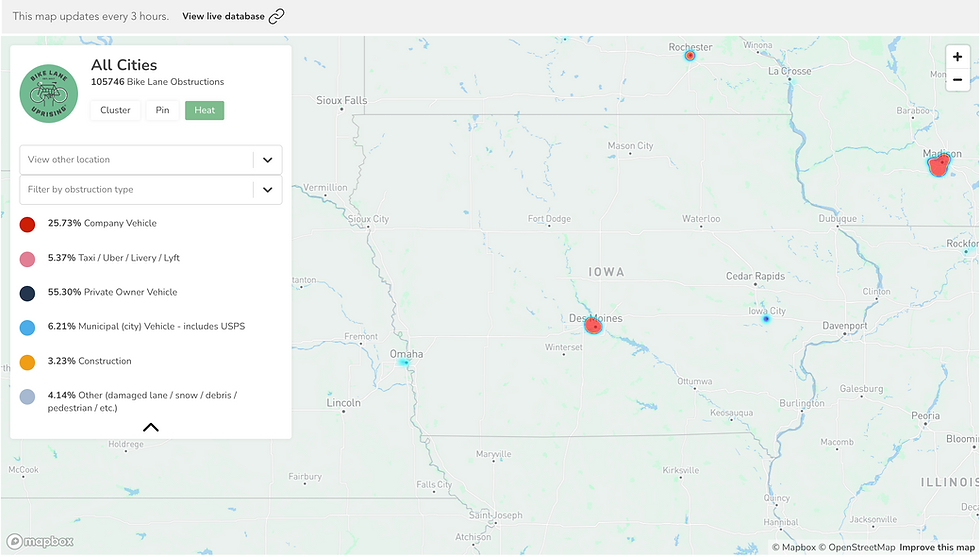Chicago Insights
- patrick.miner
- Jun 21, 2022
- 2 min read
Prepared by Patrick Miner & Christina Whitehouse
Last Updated June 21, 2022

Background:
The data on this page covers years 2018-2021, which are the four "complete" years of data collected by the Bike Lane Uprising database.
In these four years, more than 25,000 Chicago bike lane obstructions have been recorded and submitted to the Bike Lane Uprising database.
Blocking or driving in bike lanes is illegal in Chicago
Chicago bike lane obstructions collected by the Bike Lane Uprising database have a total ticket value of at least $4.8 million.
Interactive Table:
Summary of Chicago bike lanes by type & length
This table shows bike lane miles have increased from 272mi to 341mi over the past four years.
Those 69 miles of additional bike lanes equal 17.25 miles added per year.
Most of this increase comes from additional painted bike lanes ("Bike lane" in the table) and new neighborhood greenways, which are traffic-calmed residential streets.
Additionally, 12.9mi of protected bike lanes were added.
It's important to point out, painted bike lanes offer little protection for cyclists, both neighborhood greenways, off-street trails, and protected lanes help keep cyclists safe.
Interactive Table:
Bike lane information for each Chicago ward
Sort the table above by its various columns to learn more about the wards. Scroll horizontally and vertically for additional data.
For example, North Side wards 46-49 and 44 have the most bike lane miles compared to street miles with approximately 16-22% of their streets having bike lanes.
A subset of these, wards 49, 44, and 48, have the most miles of protected lanes and neighborhood greenways compared to street miles.
Meanwhile, 17 wards (more than a third) have no protected lanes or greenways.
In a majority of wards (56%), fewer than 1% of street miles have safe space for cyclists—a protected bike lane or a greenway.
The wards with the most logged bike lane obstructions are centrally located—for example wards 27, 42, 25, 4, and 2.
These five wards (27, 42, 25, 4, and 2) also had the most obstructions per bike lane mile.
Interactive Map:
Wards by total bike lane obstructions, 2018-2021
In this map, wards are shown by the total number of obstructions logged in that ward. Hover over the map (or click on it if you're using a touchscreen) to see the ward number and the number of obstructions logged in that ward.
Sources:
Bike Lane Uprising database.
Chicago Data Portal. https://data.cityofchicago.org.



